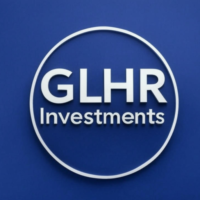
The U.S. housing market evolves in 2025 with rising inventory and slower price growth.
At GLHR Investing, we’re analyzing the U.S. housing market’s performance from July 2024 to July 2025, a period marked by persistent high prices, rising inventory, and elevated mortgage rates. Despite expectations for a 2025 rebound, the market remains challenging, with median home prices up 0.8% to $441,526 and inventory surging 14.1% to 2.06 million homes, according to Redfin data. With the S&P 500 (SPY) rallying to ~6,243 points by July 7, up 3.94% over the past month but down 15.6% YTD, how does 2025’s housing market compare to 2024? Amid Trump’s tariffs, 3.2% CPI inflation, and a 30% recession risk (per EY), here’s a comprehensive comparison of home prices, sales, inventory, and mortgage rates, with investment strategies to navigate this complex landscape.
- Housing Market Comparison: July 2024 vs. July 2025:
- Home Prices:
- 2024 (July): Median home price was $426,900 (NAR), with a year-over-year (YOY) growth of 4.5%, driven by low inventory (1.8M homes) and high demand, per web data.
- 2025 (July): Median home price reached $441,526 (Redfin, May data, latest available), up 0.8% YOY, with forecasts for 1.3–3.5% annual growth (MBA, Fannie Mae), per web data. CoreLogic reports 3.3% YOY growth from January 2024–2025, per web data.
- Comparison: Price growth slowed significantly (0.8% vs. 4.5%), reflecting increased inventory and weaker demand due to high mortgage rates (6.8% vs. 7.03%), per web data. Regional variations show declines in Florida (-4.4% in Hawaii) and stability in the Northeast, per web data.
- Why: Rising inventory (2.06M homes) and affordability challenges (30% of median income for mortgage payments) curbed price appreciation, per web data.
- Home Sales:
- 2024 (July): Existing home sales (EHS) hit 4.1 million annually (Redfin), down 2% YOY, the weakest July since 2012, with 506,373 homes sold in May 2024, per web data.
- 2025 (July): EHS projected at 4.2 million annually (HousingWire, +5% YOY), with May 2025 sales at 482,944 (-4.7% YOY), per web data. Pending sales fell 6% YOY, per X post.
- Comparison: Sales remain near 30-year lows (4M in 2024, lowest since 1995), but a slight uptick in 2025 reflects easing rates and inventory growth, per web data. New home sales rose in 2024 due to builder rate buydowns, per web data.
- Why: High rates (6.8%) and affordability issues deterred buyers, but tariff pauses and tax cuts spurred some activity, per web data.
- Inventory:
- 2024 (July): 1.8 million homes listed (Redfin, May 2024: 1,803,571, +17.8% YOY), with 3.6 months of supply in Texas, per web data.
- 2025 (July): 2.06 million homes listed (Redfin, May 2025: 2,058,065, +14.1% YOY), with 3 months of supply nationally and 4.8 months in Texas, per web data. New home inventory hit 481,000 (highest since 2007), per web data.
- Comparison: Inventory rose significantly (+27% in 2024, +14.1% in 2025), shifting some markets (e.g., Texas, Florida) toward buyer-friendly conditions, per web data.
- Why: The “lock-in effect” (72% of mortgages below 6%) eased as sellers listed homes due to life events and equity gains ($34.7T total), per web data.
- Mortgage Rates:
- 2024 (July): 30-year fixed rate averaged 7.03% (May), peaking at 7.79% in October 2023, per web data.
- 2025 (July): 30-year fixed rate at 6.8% (May, Redfin), down 0.24% YOY, with forecasts for 6.5–6.7% by year-end (MBA, J.P. Morgan), per web data.
- Comparison: Rates moderated slightly (6.8% vs. 7.03%), reducing monthly payments by ~$12 for a $368,000 home, but remained high compared to pre-2020 averages (4.09%), per web data.
- Why: Fed’s pause on rate cuts (4.25–4.5%, 20% chance in July) due to inflation (3.2%) and tariffs kept rates elevated, per web data.
- Home Prices:
- Key Drivers of 2025 Housing Market Trends:
- Trump’s Policies:
- Tariffs: 125% on China, 25% on Canada/Mexico (paused until July 9), and 50% steel tariffs (June 4) raised construction costs 5–10%, per web data. Proposed lumber tariffs (14.5% to 40%) could further increase costs, per web data.
- OBBBA Tax Cuts (May 22): $3.7T package boosted spending (0.3–0.5%), supporting home demand, but added $3.1–$3.8T deficits, pushing yields to 4.46%, per web data.
- Immigration Curbs: Reduced net immigration (~500,000) tightened construction labor, exacerbating the 4.5M home shortage, per web data.
- Why: Tariffs and deficits offset tax cut benefits, keeping affordability strained, per web data.
- Iran-Israel Conflict:
- U.S. bombing (June 21) spiked oil to ~$80/barrel, risking inflation to 5–6%, per web data. Ceasefire talks (June 24) eased some pressures, per web data.
- Why: Higher oil prices increased transport and material costs, impacting housing affordability, per web data.
- Housing Supply and Demand:
- Inventory rose to 2.06M homes (+14.1% YOY), with new home supply at 481,000 (highest since 2007), per web data.
- Demand remained low (EHS at 4.2M, near 30-year lows), with 31.2% of homes selling above list price (-3.8% YOY), per web data.
- Why: High rates (6.8%) and prices ($441,526) deterred buyers, while inventory growth signaled a shift to a balanced market, per web data.
- Critical Assessment:
- 2025’s slower price growth (0.8% vs. 4.5%) and higher inventory reflect a cooling market, but affordability challenges persist due to high rates and costs, per web data.
- The lock-in effect (72% of mortgages below 6%) continues to limit supply, though equity gains ($34.7T) are unlocking listings, per web data.
- Regional disparities (e.g., Florida declines, Northeast stability) highlight localized opportunities, per web data.
- Trump’s Policies:
- Investment Strategies for Housing Market Exposure:
- Real Estate Investment Trusts (REITs):
- Realty Income Corporation (O): ~$55, 5.7% yield, P/E ~15, flat YTD, buy near $52, target $60–$65, per web data. Benefits from retail leasing stability, per web data.
- American Tower Corporation (AMT): ~$200, 3.2% yield, P/E 30, up ~5% YTD, buy near $190, target $220–$230, per web data. Driven by 5G demand, per web data.
- Why: REITs offer high yields and diversification, with rate cuts (1.9 projected) boosting valuations, per web data.
- Homebuilders:
- Lennar Corporation (LEN): ~$150, 1.3% yield, P/E 8.3, down ~10% YTD, buy near $140, target $170–$180, per web data. Benefits from housing shortage (4.5M homes), per web data.
- D.R. Horton, Inc. (DHI): ~$180, 0.7% yield, P/E ~9, up ~5% YTD, buy near $170, target $200–$210, per web data. Strong single-family demand, per web data.
- Why: Homebuilders gain from inventory growth and rate cut prospects, per web data.
- ETFs for Diversification:
- Vanguard Real Estate ETF (VNQ): ~$80, 3.5% yield, up ~5% YTD, buy near $75, target $90, per web data. Tracks REITs like O, AMT, per web data.
- iShares U.S. Home Construction ETF (ITB): ~$110, 0.4% yield, up ~10% YTD, buy near $105, target $120–$130, per web data. Tracks LEN, DHI, per web data.
- Portfolio Allocation:
- Allocate 10–15% to housing-related stocks (LEN, O, VNQ), 40% to defensives (JNJ, PG), and 30% to bonds (Treasuries) for stability, per prior analyses.
- Hedge with 3–5% in gold (GLD, +3%) or utilities (XLU, +1%) to counter inflation (3.2% CPI) and tariff risks, per web data.
- Timing:
- Buy on SPY dips near $6,000 or stock pullbacks (e.g., LEN <$140), per web data.
- Dollar-cost average ($500–$1,000/month) to manage VIX (~20–25), per web data.
- Key Catalysts to Monitor:
- July 9 Tariff Deadline: Reinstatement of 125% China tariffs could raise construction costs, per web data.
- July 30 FOMC Meeting: Rate cuts (20% chance in July) could lower mortgage rates, boosting demand, per web data.
- Q2 Earnings (July): Confirm homebuilder and REIT performance, per web data.
- Iran-Israel Conflict: Oil at $80/barrel risks inflation (5–6%), per web data.
- Risks:
- Affordability Challenges: High rates (6.8%) and prices ($441,526) deter buyers, per web data.
- Tariff Costs: 5–10% cost hikes for construction materials, per web data.
- Recession Risk: 30% probability (EY) could curb demand, per web data.
- Inflation Surge: CPI at 3.2%, potentially 5–6% with oil spikes, per web data.
- Real Estate Investment Trusts (REITs):
- Conclusion: Navigating the 2025 Housing Market:
- The U.S. housing market in 2025, compared to 2024, shows slower price growth (0.8% vs. 4.5%), rising inventory (2.06M vs. 1.8M homes), and slightly lower mortgage rates (6.8% vs. 7.03%), reflecting a shift toward a balanced market. High affordability challenges, tariffs, and geopolitical risks persist, but OBBBA tax cuts and potential rate cuts offer tailwinds. Investors should buy housing-related stocks (LEN, O) and ETFs (VNQ, ITB) on dips, focusing on homebuilders and REITs, while hedging against inflation and recession risks to capitalize on a market poised for cautious growth.
- Why It Matters: In a volatile 2025 economy (SPY -15.6% YTD, CPI 3.2%), the housing market’s shift to a buyer-friendly balance offers opportunities in undervalued REITs and homebuilders. With a 4.5M home shortage and rate cuts looming, picks like Lennar and Realty Income provide growth and income. GLHR Investing guides you to navigate this evolving market, building a resilient portfolio for 2025’s second half.
Invest smart with GLHR Investing—build wealth in the housing market!
Disclaimer: GLHR Investing is not a financial adviser; please consult one.








